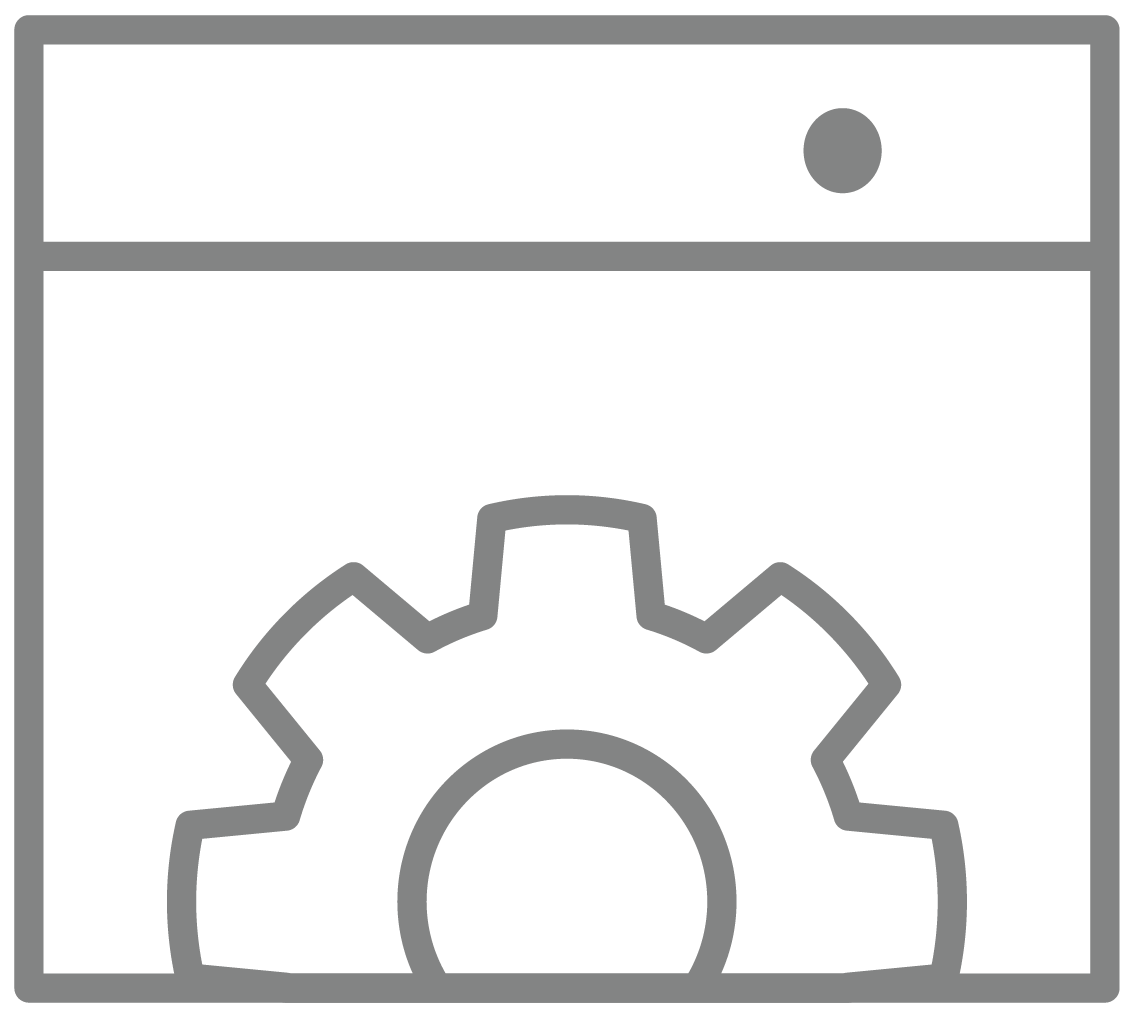Deconstructing cloud-native solutions
Overview
Cloud-native is the principal approach adopted by enterprises to build and deliver solutions by leveraging Cloud services as a delivery model. Businesses duking it out in volatile and fiercely competitive markets can outflank uncertain business environments, design new products, services and experiences, mitigate structural costs, enhance responsiveness to end-user demands, and increase time-to-market relevant solutions and services by building and operating solutions using a Cloud-native architecture. As they take on their own Cloud-native initiative, enterprises strive for a completely transformed, agile, collaborative and operationally efficient model fueling innovation and growth, not only today but also in the future. It is, thus, the key value driver for digitally leaning enterprises, as it unifies people, culture, and technology to optimize architectures by adopting a minimalist serverless approach, replacing legacy system silos with standardized technology platforms, driving innovation and scalability to mitigate operational costs, thereby managing process complexities and magnifying localized improvements into a distinct competitive advantage for enterprises.
Understanding cloud-native solutions (what)
Cloud-native solutions enable organizations to leverage Cloud services for building and running scalable solutions in cutting-edge technological environments.
- Swift and Agile Solutions
- Utilize the concept of distributed systems
- Serverless solutions offer automated scaling, flexible pay-as-you-go options, high in-built availability, and increased agility
- Eliminate cumbersome infrastructural tasks such as patching, provisioning for capacity, scheduling and scaling to enable cost efficient, scalable, modular, resilient and highly customer-centric solutions
- Swift and automatic transition causing minimum impact
- Examples: Service meshes, serverless computing, immutable infrastructure, microservices, declarative APIs
Augmenting value and velocity with cloud-native solutions (why)
Cloud-native solutions free up enterprise bandwidth from cumbersome monolithic solutions, thus creating a nimble, resilient, portable and super-scalable model offering seamless scale-out and hardware decoupling. The weight of bulky and convoluted legacy systems is eliminated in the process. Enterprises are able to optimize Cloud initiatives as key drivers of innovation, growth and operational efficiency, via a cost-effective technological shift.
Expressly, Cloud-native solutions enable enterprises to:

Be lean, agile and transformed
- Freedom from cumbersome legacy infrastructure
- On-demand pay-as-you-go options
- Modular technologies, solutions and services
- Horizontal scaling, distributed processing
- Preset replacement of failed components

Improve outcomes, services and experiences
- Automatic system upgrades and live patching across stack levels
- Reduced downtime
- Reduced dependence on ‘IT experts’
- Pitfalls due to human errors eliminated
- Precious resource bandwidth released for complex tasks (decision making, strategizing)

Stay ahead, stay incredible
- Break linear patterns
- Unlock an agile operating model
- Build and deliver personalized products, services and solutions
- Cater to dynamic customer demands
- Prepare for sudden demand spikes, volatile market conditions

Create a resilient architecture
- Access to robust architecture and design
- Continuity of systems, solutions and services despite environmental hurdles
- Architectural steadiness; productivity loss avoidance
- Seamless operations across distributed workspaces

Unlock the power of choice with application portability
- Seamless Lift and Shift, unmatched flexibility
- Cost-efficient and scalable multi-cloud environment
- Open source tools for automated deployments across multiple clouds
- Move your application suite anywhere, anytime at minimal cost
Building cloud-native solutions (how)
Building and operating Cloud-native solutions call for enterprises to remodel their core approach towards solution delivery by integrating fundamentals of Cloud-native architecture into their existing set up. The principal concepts of Cloud-native solution development are DevOps, Continuous Delivery, Microservices, Containers and Serverless Computing. Lately, serverless computing has emerged as the top choice of enterprises, when compared with Containers, expressly due to the benefits of time, scale and cost offered by the latter. To elaborate, a serverless architecture allows developers to build and iterate solutions in a swift and agile manner, without scalability concerns. Additionally, serverless computing does not require a constantly running code, hence remains a highly cost-efficient alternative where demand is fluctuating. Most enterprises strive to leverage a hybrid architecture comprising both serverless and container-based functions to optimize Cloud capabilities.
DevOps and continuous delivery
- Enables technology teams and software developers to collaborate and deliver top-notch software solutions
- Enables enterprises to build an agile environment, with frequent prototype building and testing, and swift release of software
- Enabled by Agile product development practices
- Leverages automation to introduce incremental software changes into a live production environment on ongoing basis
- Enables standardized and highly reliable software release processes
- Allows faster feedback loop
- Mitigates risk around software delivery
Microservices
- Architectural approach to develop solutions as a group of small services
- Each service implements business capabilities, runs in its own process, communicates via messaging/ HTTP APIs
- Modular set up allows independent deployment, upgrading, scaling and restarting of each microservice
- Typically form part of a completely automated system
- Allow frequent updates to live solutions without impacting end-users
Containers
- More efficient and much faster compared to standard virtual machines (VMs)
- Leveraging virtualization at the OS-level to dynamically divided one OS instance between one/ more isolated containers (each with a distinct writable file system and resource quota)
- Creating/destroying entail low overheads; packing density in a single VM is high
- Ideal for deploying discrete microservices
Serverless computing
- Simplified and cost efficient alternative to build and deliver solutions; does not require enterprises to pay for idle capacity
- Highly scalable method; enables effortless scaling on demand
- Offers swift and agile delivery by cutting down time-to-market considerably; allows developers to modify code on a piecemeal basis, and deploy serverless workflows and solutions combining container images, batch jobs or source codes without dependence on Kubernetes expertise
Cloud-native solutions versus Traditional enterprise solutions
Cloudy is better than clear!
Parameters

Scalability
Cloud-native solutions
- Automating infrastructure at scale eliminates downtime due to manual error; same set of rules consistently applied regardless of deployment size
- Systems automated, as against servers
- Goes beyond ad-hoc automation projects used as an appendage to conventional virtualization programs
- Optimum value generated with end-to-end digital transformation
Traditional enterprise solutions
- Involve human effort, require manual creation and management of servers, storage configurations and networks
- At scale, manual operators slow and inefficient at detecting issues and implementing solutions well due to high volumes and complexity levels
- Manual scaling may fold human errors into the solution code causing grave operational repercussions

Autonomy
- Solutions deconstructed into compact and loosely coupled, yet independently operating services, which further connect to smaller and autonomous development teams
- Unencumbered design enables easy and frequent software updates, hassle-free scaling, and solution breakdown/restart with zero impact on other services
- Gigantic and immovable traditional architectures
- Multiple incongruent services packaged into an integrated deployment suite
- Unwarranted dependencies created across services
- Agility hampered during development

Collaboration
- Leverages DevOps to combine processes, people and tools
- Fosters a culture of collaboration between developers and operations teams
- Ensures seamless transfer of the completed solution code into production
- Ensures smooth servicing and maintenance during delivery
- Promote a siloed culture, over-the-wall handoffs of completed solution code from development team to operations team
- Cumbersome design hampers collaboration, impacting customer outcomes and experiences
- May cause delivery to be slow and substandard

Continuity
- Design and release of individual software updates enabled as soon as they are ready; continuous delivery assured
- Rapid software release enables a crisp feedback loop
- Enables enhanced customer responsiveness and competitive agility
- Continuous delivery, coupled with best practices like test-driven development/ continuous integration, create a winning blueprint
- By design, software released sporadically, typically timed weeks or months apart, (even though a majority of components completed much earlier, with few dependencies)
- Opportunities to win customers and grow revenues may be missed due to delayed deployment of solution attributes demanded by end-users

Capacity
- Infrastructure provisioning and configuration automated
- Resources allocated/reallocated dynamically at the time of deployment basis unique needs of each solution
- Optimizes solution lifecycle management
- Simplifies scaling to service demand spikes, resource utilization, orchestration across available resources, failure recovery with least downtime
- Dedicated custom-built platform for solutions
- Delays solution deployment due to oversized solution
- Capacity estimates provision for worst case scenarios
- Limits enterprise’s ability to scale beyond design limits to meet unforeseen demand spikes

Predictability
- Conformist set-up
- Designed to follow a prescribed framework
- Resilience optimized through predictable behaviors
- Automated container-driven infrastructure; dictates how software is written
- Architected/ developed in a unique way
- Full potential of a Cloud-native platform restricted
- Solutions require a long time to build
- Improvements released in large and infrequent batches
- Organizations compelled to scale up, as against out

OS Dependence
- Allows developers to abstract from principal infrastructure dependencies
- Formalized platform; teams able to focus on software;
- Focus on configuring, patching and servicing operating systems not required
- Architecture creates close dependencies between solution and underlying OS, hardware, storage, and back up services
- Developers find these dependencies cumbersome
- Increased risk and complexity when migrating/ scaling solutions on to a new set up
At EXL, we are experts at building scalable and resilient AI capabilities across business functions.
We combine deep domain expertise, data/ analytics, & cutting-edge technology to offer an integrated approach to digital transformation. Our solutions give you the power to redefine your market, re-engage your customers, reconfigure your cost base, and reimagine your business models.
At EXL, we translate digital intelligence into solutions that reduce cost and improve customer satisfaction with modular solutions that easily integrate with new and legacy systems.
Bring us your toughest challenges, and we’ll look and go deeper to build the right combination of analytics, AI, robotics, machine learning, cloud, and other advanced technologies to help you succeed.
Ready to tap into your full business value with Cloud? Contact us today. Please write to us at Cloud-Engagement@exlservice.com
Reference Links
What is Serverless Computing? | IBM
https://www.capgemini.com/service/cloud-native/#cloud-native-main-report
Cloud Optimization Strategy | Accenture
https://www.ey.com/en_gl/financial-services/6-ways-to-maximize-value-from-your-cloud-migration
Serverless computing vs. containers | How to choose | Cloudflare
3 cloud architecture patterns that optimize scalability and cost | InfoWorld
Microsoft Word - IT Optimization White Paper v7.3.docx (oracle.com)
Written by:
Neha Dutta
Cloud Enablement Lead, EXL
Raman Kumar
Principal Cloud Solution Architect, EXL
Bill Heffelfinger
Digital CTO and VP, Cloud Engineering, EXL
Keshoo Sharma
Manager, Advanced Digital Capabilities and Solutions, EXL
